Announcing our Participation in the NatHERS for Existing Homes Trial
FOR IMMEDIATE RELEASE
Sydney, 11 March 2025
Certified Energy is pleased to announce our...

While right now 6 Star NatHERS reports are a pathway to compliance for Energy Efficiency under Section 3.12 in the National Construction Code, however, this year new rules will be implemented with a change to 7 Star NatHERS.
You can learn all you need to know about the update and energy efficiency compliance for residential construction projects in Australia right here.
At Certified Energy we take pride in helping our clients and their project achieve their full potential. Through the NatHERS assessment pathway, we can recommend thoughtful design solutions to reduce the environmental impact of your design whilst maintaining the vision of your project.

Our team at Certified Energy will guide you through the various approval pathways to help your project achieve the necessary compliance.
The possible 0 to 10 stars is a scale that indicates the energy efficiency of a dwelling. If a dwelling is rated 0 stars, that means it offers no insulation from the external temperature. For example, if it is 20 degrees outside it will be 30 degrees inside. A 10-star dwelling is able to maintain a comfortable internal temperature all-year-round despite external temperatures. Hence, the more stars a dwelling has, the less energy it consumes, therefore reducing energy expenses.
When simulating the thermal performance of your dwellings, we will ensure that your energy expenses are reduced and that a healthy living environment is delivered through calculated and accurate methodologies. Doing so can ultimately be cost-effective in the long-term and increase property value.
Only assessors trained, certified and accredited by 1 of the 2 nationally operating Assessor Accrediting Organisations (AAOs) can use NatHERS second generation thermal assessment software to provide official thermal efficiency star ratings and issue relevant certificates. The two AAOs are the Australian Building Sustainability Organisation (ABSA) and the Building Designers Association Victoria (BDAV). At Certified Energy, our assessors are accredited by the Australian Building Sustainability Association (ABSA).
Our years of experience enables us to assess your project with unrivalled cost and time efficiency; whilst also maintaining the integrity of your designs. Normally, assessors provide thermal performance figures that meet the standard requirements in order to obtain compliance. However, for a small additional fee, we can optimise the use of energy saving measures so that they are placed effectively whilst still complying with the regulatory requirements. Our assessors also follow the Assessor Code of Practice and are given ongoing support so they can provide you with a high quality of service. NatHERS Universal Certificates can only be issued by NatHERS Accredited Assessors, which includes the NatHERS logo, rating and stamp.
The ABSA is a not-for-profit industry organisation that aims to improve Australian homes and buildings by ensuring they are sustainable. This includes ensuring that Australian buildings are designed to provide comfort and efficient use of energy resources. The Association supports building professionals and assessors with membership and training.
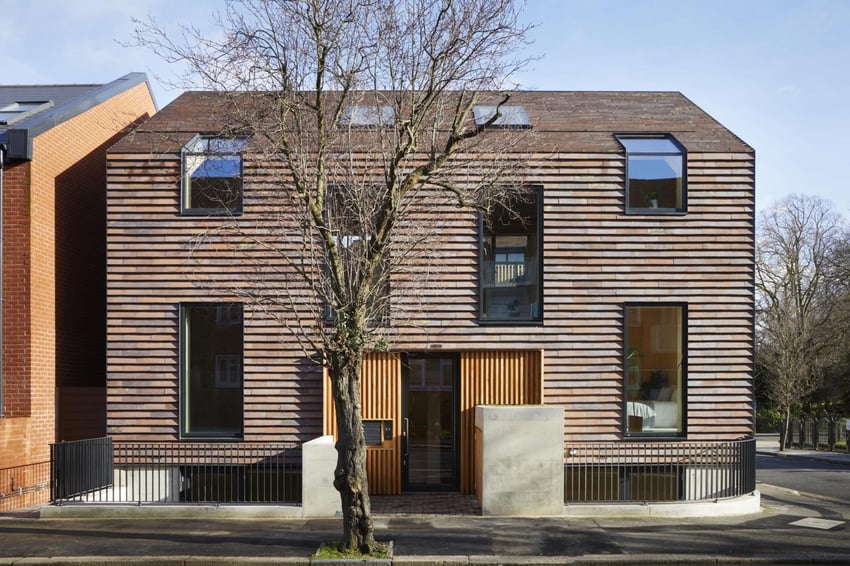
NatHERS is assessed through a process of thermal modelling where the proposed dwelling is modelled using NatHERS approved software. The construction type, materials, glazing, lighting and insulation are used to assess the overall annual thermal performance of the project. Climate data within the software determines the development’s total heating and cooling load throughout the year, with specific heating and cooling targets outlined by NatHERS that need to be met.
NatHERS Accredited Software is used to calculate an energy efficiency star rating and is based on expected indoor temperatures. This is assessed by assessing the project’s design, climate and household use. The tool therefore does not take electrical appliances within the dwelling into consideration, other than the air flow from the dwelling’s ceiling fans.
The simulation model will determine the level of heating or cooling temperature that is needed for occupants to remain comfortable within the dwelling.
Once the steps above have been completed, the total annual estimated levels of energy efficient heating and cooling are determined by a ranking out of 10 stars.
The National Construction Code (NCC formally known as the BCA) will soon require all new residential dwellings in Australia (Except NSW)* to achieve a minimum of a 7 Star Rating using the Nationwide House Energy Rating Scheme (NatHERS) approved software.
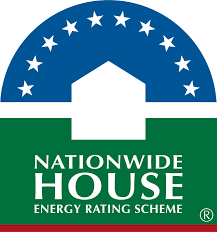
This NatHERS software estimates the internal temperature in each room of a dwelling for each hour of the year based on assumptions about occupant behavior, information about the structure and specification of the dwelling, and standard weather data for the dwelling's location.
The internal temperature is compared against a comfortable temperature range and occupancy pattern to estimate the annual heating and cooling loads per square meter of floor area to keep the temperature within the comfort range. The loads are adjusted and converted into a star rating between 0 and 10. A 10-star home is unlikely to need any artificial cooling or heating to maintain comfortable internal conditions, whereas a 0-star home would offer virtually no protection from the external temperature.
The simulation model will determine the level of heating or cooling temperature that is needed for occupants to remain comfortable within the dwelling.
The NatHERS Accredited software model will determine the need for heating and cooling systems when internal temperatures fall outside of a comfortable range. This is based on assuming that occupants will open and close windows, blinds or awnings in an attempt to restore a comfortable temperature level prior to using the heating or cooling system.
Once the steps above have been completed, the total annual estimated levels of energy efficient heating and cooling are determined by a ranking out of 10 stars.
A NatHERS assessment includes NatHERS Accredited Software that is used to determine an energy efficiency rating. This is completed by a NatHERS accredited assessor who can be verified by the NatHERS logo on the Universal Certificate. A NatHERS Universal Certificate will provide information regarding the key design features of the dwelling, the building materials, and the scope used to generate the dwelling’s star rating.
The possible 0 to 10 stars, is a scale that indicates the energy efficiency of a dwelling. If a dwelling is rated 0 stars then it offers no insulation from the outside temperature. For example, if it is 20 degrees outside it will be 30 degrees inside. Whereas a 10-star dwelling is able to maintain a comfortable inside temperature all year round no matter what the outside temperature. Hence, the more stars a dwelling has the less energy it consumes, therefore reducing energy expenses.
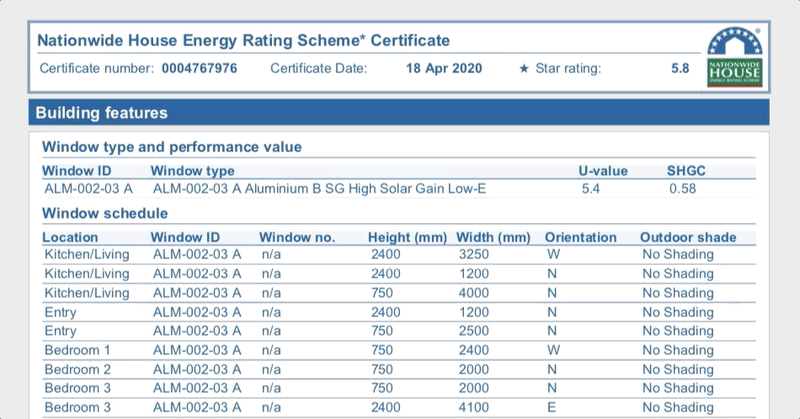

NatHERS certification is required for all new developments with multiple dwellings, however NatHERS can also be used if desired on single dwellings. It was developed in order to reduce the countries overall energy consumption along with the BASIX process. BASIX is a NSW government initiative designed to improve the environmental sustainability of residential developments. It sets out the minimum standards for compliance in the following three areas: water, thermal comfort and energy, and can be assessed at through various means such as DIY which does not require NatHERS thermal modelling. NatHERS is a national scheme that involves the thermal assessment of a development in order to generate a NatHERS energy rating, which can be used for the thermal section of the BASIX. NatHERS energy ratings are much more thorough, accurate and flexible than the BASIX thermal tool. In order to achieve the best thermal performance at the lowest cost we recommend using both BASIX and a NatHERS energy rating.
Everything you need to know about the NatHERS requirements per state.
Small projects can be NatHERS modelled in 2-3 hours, and turned around within 24 hours. Larger multi-dwelling projects can take up to 5 days to model.

Our careful consideration when simulating the thermal performance of your dwelling(s) will ensure that your energy rating delivers many benefits including:
– Accurate results
– Reduced energy expenses
– Reduced cost of complying with BASIX
– Increased property values
– Sustainable buildings
– Healthier living environments
The cost for NatHERS certification depends on the size and complexity of the project, depending on the amount of time that is required to fully model and assess the building.
 What you need to know:
What you need to know:
- State and territory ministers will meet in July to review the 11-year-old laws
- Climate Council and the Property Council of Australia are now pushing to make a 7-star energy rating the new minimum
- Living in a 7-star energy-efficient, all-electric, home would cut your energy bills by an average of $450 a year
- The move to a 7-star energy rating will reduce emissions by 25% each year, which is the equivalent of one car.
- 16% of new housing are already being built to the 7-star energy rating, according to a 2022 report from CSIRO.

With buildings in Australia accounting for nearly 25% of carbon emissions it is not surprising that buyers are looking to build more sustainable homes.
A 2020 CSIRO study found that more than 9 million homes in the country do not meet the 7 star Nationwide House Energy Rating Scheme (NatHERS) rating that deems a property sustainable. With only 10% of new homes built received a 7-star rating or higher.
Thus, with the target of building more 7-star energy rating homes, banks and lenders are now offering special green home loans to borrowers that are buying or building eco-friendly homes.
A green home loan is a type of loan that encourages borrowers to buy, build or renovate their homes in an environmentally friendly way. These loans offer discounted rates for homes that pass an eco-friendly threshold. In order to qualify for one of these loans, your future house should pass at least one of these qualifications:*
Choosing the correct insulation applications for your project for optimal thermal comfort and reducing or removing performance glazing.
Certified Energy, is a medium-sized company with over 12 people working with us and 15 years of experience in the ESD field. We take pride in the thoroughness of our assessments and often find that the quality of our work has a high standard, is precise, and lives up to the latest requirements of your NatHERS assessment needs. We can deliver projects quickly and resolve difficult or nonstandard situations with great expertise.
Here are 4 tips we think you should know before choosing your energy rating consultant.
Check qualifications; always choose your consultant based on their relevant building industry degree qualifications, anything from engineering, architecture, or building background should suffice.
When you are on a deadline, choose an ESD Assessor which has a minimum of 3-4 people working for them. 95% of the ESD Assessors have at least 3 consultants doing their energy assessments and will be able to respond fast.
Every ESD consultant should be able to discuss certain aspects of a NatHERS assessment, ask if they collaborate together, and can advise you about the best case practices when doing a NatHERS report.
What about their past project experience? Can your Assessor give you a good referral?


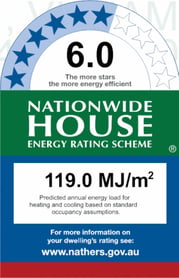
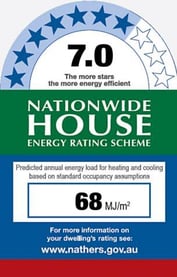
With the new NatHERs minimum set to change to a 7-star energy rating, you may be wondering how to go about building a new house that meets the target.

If you didn’t already know, the NatHERs website has free plans for your next build. The plans are designed to help you achieve a minimum 7-star energy rating.
With 3 designs to choose from, NatHERs recommends that you apply the key principles in your next build rather than copy the designs. This is because each site is different to another and will require a level of customisation to achieve a high energy rating.
The Your Home website contains various design packs that are designed by architects and energy assessors to create a 7-star minimum home.
With the NatHERS minimum star rating changing to 7 stars, you may be interested to know what sets a 7 star home apart in the world of energy efficient living? In this article, we'll dive into the benefits of 7 star homes and why energy efficiency is transforming the construction and design industry.
FOR IMMEDIATE RELEASE
Sydney, 11 March 2025
Certified Energy is pleased to announce our...